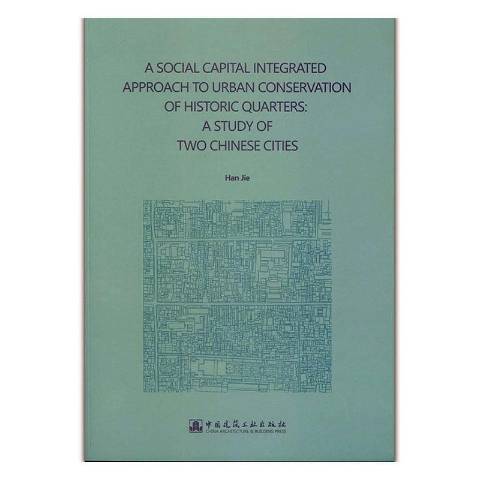《A SOCIAL CAPITAL INTEGRATED APPROACH TO URBAN CONSERVATION》是2019年中國建築工業出版社出版的圖書。
基本介紹
- 中文名:A SOCIAL CAPITAL INTEGRATED APPROACH TO URBAN CONSERVATION
- 作者:Han Jie
- 類別:施工技術與安全
- 出版社:中國建築工業出版社
- 出版時間:2019年10月
- 開本:16 開
- 裝幀:平裝-膠訂
- ISBN:9787112240531
內容簡介,圖書目錄,
內容簡介
本書通過文獻梳理,發現在目前的城市遺產保護研究中存在一個鮮有關注的層面,即社會資本。本書將重點聚焦在社會關係、網路和社會價值等社會資本特徵的討論中,分析了傳統中國社會中的傳統社會關係和社會關係的基本範式——差序格局,運用了一套獨特的社會資本參數體系以分析社會核心價值——社會和諧。 通過對兩個中國城市歷史街區的案例研究,本書填補了遺產保護在社會性可持續發展維度中社會和諧和社會公平兩大要點的不足,在路徑依賴的決策分析框架下進行了社會資本測度分析以及社會網路分析,提出了遺產保護的創新方法——整合社會資本的城市遺產保護,並討論了該方法於中國背景下在遺產保護和遺產管理領域套用推廣的可能性。
This book is based on Dr. Han Jie’s PhD study in National University of Singapore. Urban conservation in historic quarters has now been frequently used as a tool of urban development to trigger the revivals of decayed urban historic areas under various contexts. Particularly in China during the last two decades, with selective protection of “significant” heritage buildings or sites together with rampant demolition of surrounding traditional quarters, many urban conservation practices have entailed so called "protective damages” , or even social conflicts during the transformation process.
Sustainable development challenges the process: a decayed historic place should be sustainably transformed not only in terms of economic gains, but also in terms of cultural ecology and social cohesion, With an angle of socially sustainable devel opment, this book argues that sustainable urban conservation should highlight the value-centered place management and decision-making process.
This research identifies one omitted aspect in current study of urban conservation which is social capital. Although social capital is a widely discussed and adopted concept, this research focuses on its features as social relationship, network and social value. The research examines traditional social relationships and the fundamental relationship patterns in traditional China society—CHU-XU-GE-JU ( 差序格局 ). Moreover this research employs a set of specific social capital parameters to facilitate the analysis of the core social value system—HE( 和 ) in China, which means social cohesion.
With the intention to examine how social capital might contribute to urban conservation by filling in the gap of social sustainability concern with respect to the two key indicators—social cohesion and social justice, this study examines the roles of social capital in the urban conservation process through case study of two historic quarters in China. Both were planned to be demolished in the initial stage but successfully conserved in the end, namely Hui Fang in Xi’an and Tianzi Fang in Shanghai. A mixed
methodology is employed, which includes case study, social capital survey and social network analysis under a decision-making framework of path dependency, Based on the findings, this study proposes an alternative conservation approach—the social capital integrated urban conservation approach, and the potential implications for heritage conservation and management in China are discussed.
圖書目錄
Acknowledgement
List of Figures
List of Tables
List of Charts
Chapter1 Introduction
Chapter2 Literature Review of Urban Conservation
Chapter3 Theoretical Underpinning
Chapter4 Research Methodology
Chapter5 Case Study of Hui Fang in Xi’an
Chapter6 Case Study:Tianzi Fang in Shanghai
Chapter7 Data Analysis
Chapter8 Conclusion
References
Appendix Principle Component Analysis (PCA)

